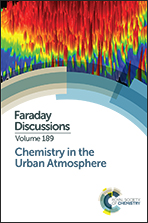Evaluating the performance of low cost chemical sensors for air pollution research
Abstract
Low cost pollution sensors have been widely publicized, in principle offering increased information on the distribution of air pollution and a democratization of air quality measurements to amateur users. We report a laboratory study of commonly-used electrochemical sensors and quantify a number of cross-interferences with other atmospheric chemicals, some of which become significant at typical suburban air pollution concentrations. We highlight that artefact signals from co-sampled pollutants such as CO2 can be greater than the electrochemical sensor signal generated by the measurand. We subsequently tested in ambient air, over a period of three weeks, twenty identical commercial sensor packages alongside standard measurements and report on the degree of agreement between references and sensors. We then explore potential experimental approaches to improve sensor performance, enhancing outputs from qualitative to quantitative, focusing on low cost VOC photoionization sensors. Careful signal handling, for example, was seen to improve limits of detection by one order of magnitude. The quantity, magnitude and complexity of analytical interferences that must be characterised to convert a signal into a quantitative observation, with known uncertainties, make standard individual parameter regression inappropriate. We show that one potential solution to this problem is the application of supervised machine learning approaches such as boosted regression trees and Gaussian processes emulation.
- This article is part of the themed collection: Chemistry in the Urban Atmosphere

 Please wait while we load your content...
Please wait while we load your content...